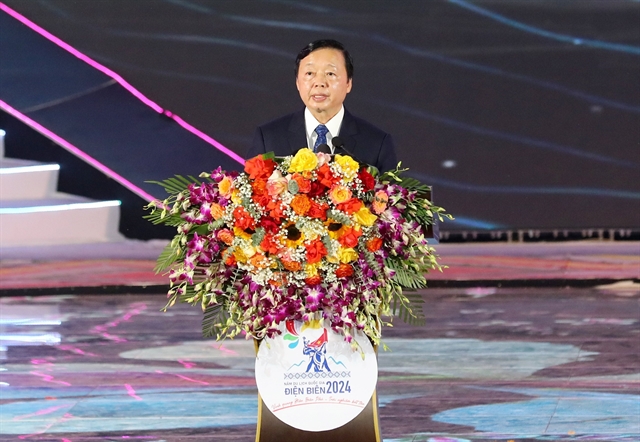 Life & Style
Life & Style

 |
| Tourists to Điện Biên Province experience cultural space of the northern mountainous region. VNA/VNS Photo |
ĐIỆN BIÊN — The northwestern province of Điện Biên is set to become a tourism and service hub of the northern midlands and mountainous region by 2030, according to the province’s master plan for the 2021-2030 period with a vision towards 2050.
Deputy Prime Minister Trần Hồng Hà handed over the master plan’s approval decision to local authorities at a ceremony on Sunday.
The plan states that by 2030, Điện Biên wants to be a province with a medium level of development, focusing on high-tech, high-quality forestry and agriculture as well as processing and tourism.
The provincial master plan is expected to place a significant emphasis on the digital economy.
To achieve zero greenhouse gas emissions, Điện Biên looks to develop thoroughly in all economic, social, and environmental areas by 2050.
The area will rise to prominence internationally and serve as a hub for historical, cultural and ecological tourism in the country, according to the plan.
A number of objectives are also outlined, including exceeding 10.51 per cent of the annual economic growth rate for the 2021–30 period. By 2030, the GRDP per person on average is expected to surpass VNĐ113 million.
Over 2.65 million tourists are expected to visit the province in 2030.
Điện Biên has chosen three innovations: refining rules and regulations to boost productivity; completing the socioeconomic infrastructure system in a timely and contemporary manner, emphasising transportation infrastructure investments to spur innovation and development; and applying science and technology, strengthening innovation for human resource development.
The driving economic axis along Highway 279, the Điện Biên – Sơn La – Hà Nội Expressway, associated with Điện Biên Airport, is considered the main and important axis of the entire region.
Deputy PM Hà asked the local authorities to prioritise resources to invest in infrastructure projects for regional and global connection, creating a connection axis between Việt Nam and other Southeast Asian countries and China.
The province must concentrate on developing traffic connection systems, connecting energy infrastructure, digital infrastructure, health care, and education, especially on critical projects, he said.
He urged the province to implement mechanisms and regulations to attract large investors, citing Điện Biên's numerous advantages in tourism development. This will allow the province to create unique, elegant, and classy tourism products.
In order to produce distinctive, high-value agricultural goods, the province must continue to highlight its agricultural strengths and soil advantages, but it also needs sound planning and connections.
At the same time, he added, the province must focus on the forestry industry and expand afforestation associated with multi-purpose exploitation of forests in an effective and appropriate way.
According to him, Điện Biên also benefits from hydropower, solar energy, and wind energy—renewable energy sources that require consideration, funding, and utilisation.
After the master plan was announced, he urged the province to step up investment promotion activities and ask for help of reputable and experienced scientists and investors to ensure the area develops diversely and sustainably.
He said the province needed to promote the digital economy, IT application and administrative procedure reforms in all fields. — VNS